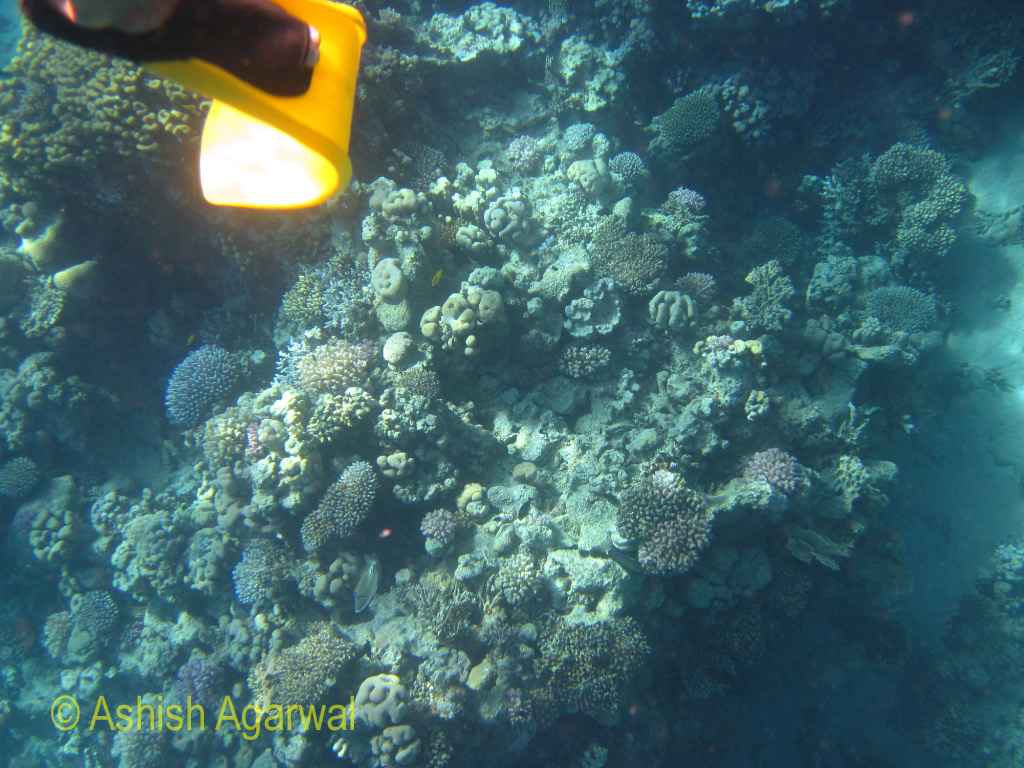The Stirling Castle in Scotland, located near the town of Stirling, is one of the most important marks of the Scottish medieval ages history, the time when there were constant skirmishes between the Scots and the English (which ended when they got a common king in 1603, and then they were merged around a hundred years later). Close by, one a bridge over the Stirling river, one of the important battles of this fight for retaining their independence was fought, celebrated in the movie "Braveheart".
This is a photo near the entrance to the castle, and if you look through the entrance, you can see the gardens and even a hint of the river at lower levels (like most castles), the Stirling Castle is located at a higher level as a part of good defensive strategy. Over the entrance, you can see some flags, with the central flag being the Saltire, the Scottish Flag (as distinct from the Union Jack (the British Flag)). There are ongoing efforts to gain independence for Scotland, and the Saltire plays a key role in that.
If you want a print of this photo, available at
FAA.
The Stirling Castle is located at a height over the surrounding, at a natural volcanic height called Castle Hill (the name sounds so appropriate, right?). The height and the natural beauty and greenery of the surroundings gives a beautiful look to the location, with houses and rolling meadows seen below. Vehicles are allowed upto the car parking which is located close to the entrance, but there will be some walking involved to the entrance, and of course, inside the castle, there will be more walking involved. The spot from where this photo was taken only allows vehicles belonging to the castle to go through, everybody else needs to park their vehicles in the car parking. From this location, there are also some view finders that allow you to see the landscape.
Prints of a version of this photo that has been converted into an Oil Painting
available at FAA.
In addition to the huge advantage of being at a height from where you can see approaching enemies and try to pick them out as they climb up to reach the castle, there was the always the moat to deter attackers. This moat, now empty and looking beautifully green, would have been full of water and maybe some pollutants to deter people from trying to cross the moat other than through a narrow bridge (which could have been pulled up), all the while defenders from the top of the castle walls would have been attacking those who were attacking the castle. It looks so beautiful now, but is deep and would have been dangerous at those times.
Prints of a version of this photo that has been converted into an
Oil Painting available at 500px.
In the first photo above, visitors could be seen near and at the entrance to the Stirling Castle. This is a photo of the flags and flagpoles above the entrance. It was always interesting for me to see whether it would be the Union Jack (the official flag of Great Britain) or the Saltire (the Scottish Flag) at the various castles and other historical landmarks. In this case (and even at the Eilean Donan Castle), I could see the Saltire while the Union Jack was in a prominent position at Edinburgh Castle. I was hoping to get a photo with the flag fluttering, but there was no wind and hence no flutter.













